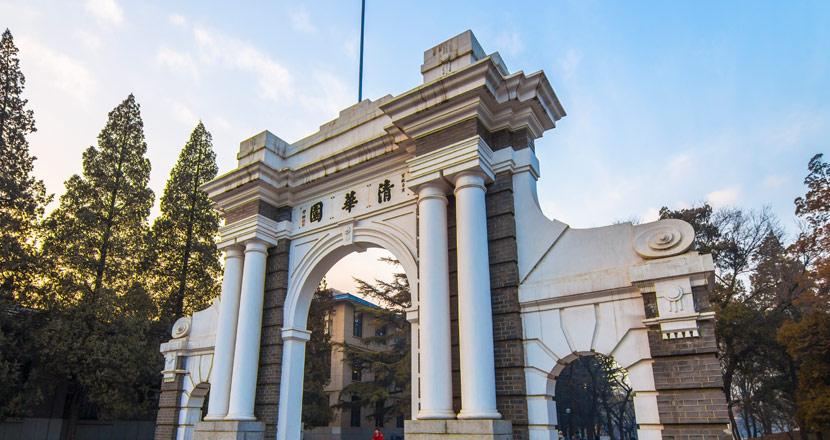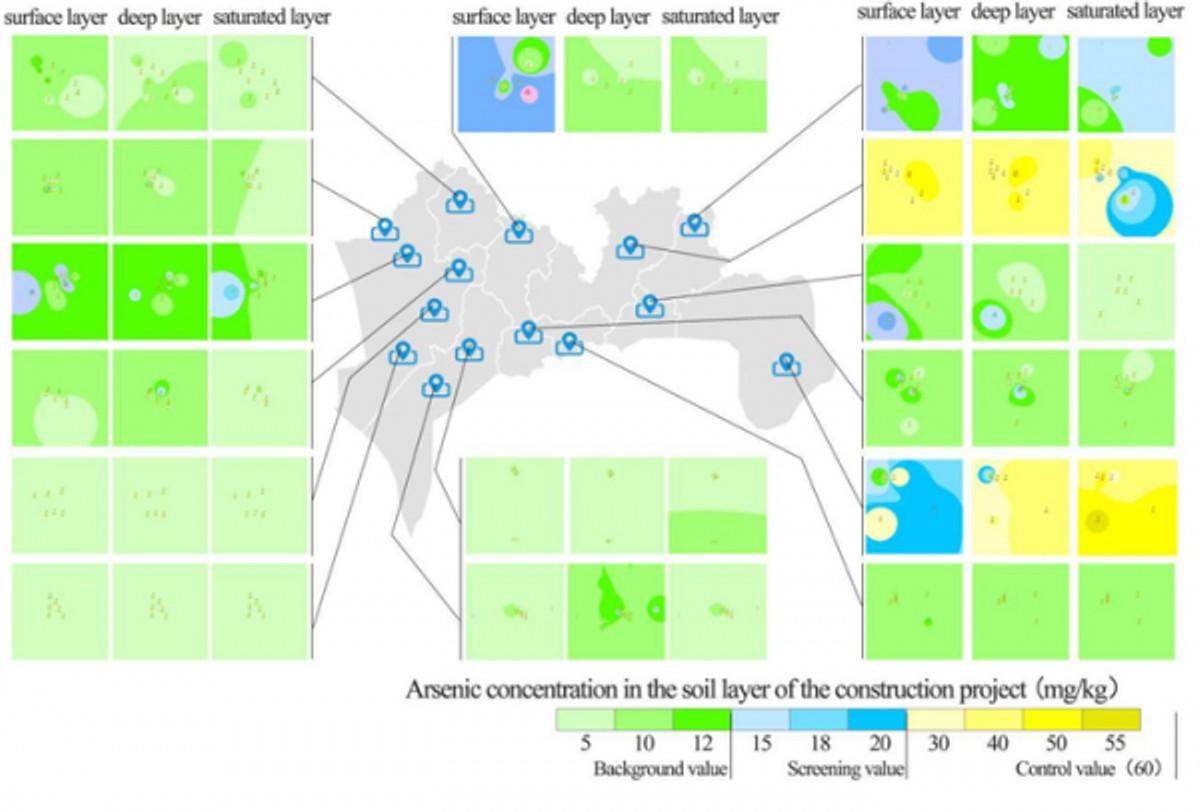Sintering Solid Waste could reduce Excavated Soil and Rock
03/06/22-FR-English-NL-footer
Le frittage des déchets solides pourrait réduire le sol et la roche excavés
 Image-Tsinghua University Press.
Image-Tsinghua University Press.
La construction urbaine, en particulier l'expansion et l'utilisation à grande échelle de l'espace souterrain, a entraîné l'excavation massive de sols et de roches provenant des bâtiments et des métros. Une nouvelle solution suggère que l'utilisation du frittage est une méthode réalisable pour recycler les déchets solides en produits de construction du point de vue de la technologie, de l'environnement et de la politique grâce à des méthodes qualitatives et quantitatives.
Cette étude a été publiée par Tsinghua University Press le 19 mai 2022, dans Circular Economy. (DOI 10.1016/j.cec.2022.100007)
Leur article traite de la faisabilité d'une technologie de frittage respectueuse de l'environnement des sols et des roches excavés et vise à explorer l'utilisation du frittage du point de vue technique, des restrictions de protection de l'environnement et des niveaux de politique gouvernementale. Plus précisément, le cas objet de cette étude est le sol et la roche excavés générés à Shenzhen, en Chine.
Dans un premier temps, l'évaluation technique vise à déterminer si les conditions pédologiques des sols et roches excavés répondent aux critères des normes et spécifications techniques d'utilisation du frittage applicables. L'enquête sur les échantillons de sol et de roche excavés à Shenzhen révèle que les types de sol dans chaque région administrative de la ville sont complexes et divers, et que le sol et la roche excavés à haute teneur en argile produits par le projet de construction existant à Shenzhen (2020) sont estimée à 37,3 %, qui peut être recyclée comme matière première de frittage.
Sur cette base, nous pouvons estimer la quantité totale d'argile à haute teneur pouvant être utilisée comme matière première de frittage à Shenzhen à près de 27 millions de m³. Si certaines usines de briques et de tuiles cuites fonctionnaient à Shenzhen sous l'encouragement des autorités compétentes, l'utilisation de 27 millions de m³ de sol et de roche excavés riches en argile pour les produits frittés au lieu de l'élimination traditionnelle permettra d'économiser près de 270 millions de yuans de coûts d'élimination.
Les chercheurs de cette étude ont également collecté les données d'émission réelles de certaines usines de briques cuites représentatives du sol et de la roche excavés (ou co-combustion) en tant que matières premières de frittage en Chine, et la concentration réelle des émissions atmosphériques des usines nationales peut répondre à la «norme d'émission de Polluants atmosphériques pour l'industrie de la brique et de la tuile (GB-29620-2013) », qui a montré qu'il n'y avait aucun obstacle à la mise en œuvre du point de vue environnemental du frittage du sol et de la roche excavés.
Enfin, au niveau politique, principalement du point de vue des politiques et systèmes nationaux et provinciaux, l'industrie de la brique frittée appartient à l'industrie encouragée. Il est possible de promouvoir l'utilisation des terres excavées et du frittage des roches aux niveaux politique national et municipal.
 D'après le schéma de distribution de l'arsenic dans les sites d'échantillonnage ci-dessus, les valeurs de test des projets de construction régionaux tels que Bao'an, Nanshan, Futian, Luohu et Guangming étaient inférieures à la valeur de fond du sol de Shenzhen, suivie de Longhua. Les valeurs de test de Pingshan et d'autres projets de construction régionaux étaient inférieures à la valeur de dépistage du risque du métal lourd à Shenzhen, tandis que celles de Dapeng, Longgang et d'autres projets de construction régionaux étaient supérieures à la valeur de dépistage du risque du métal lourd à Shenzhen mais inférieure à la valeur de contrôle du risque.
D'après le schéma de distribution de l'arsenic dans les sites d'échantillonnage ci-dessus, les valeurs de test des projets de construction régionaux tels que Bao'an, Nanshan, Futian, Luohu et Guangming étaient inférieures à la valeur de fond du sol de Shenzhen, suivie de Longhua. Les valeurs de test de Pingshan et d'autres projets de construction régionaux étaient inférieures à la valeur de dépistage du risque du métal lourd à Shenzhen, tandis que celles de Dapeng, Longgang et d'autres projets de construction régionaux étaient supérieures à la valeur de dépistage du risque du métal lourd à Shenzhen mais inférieure à la valeur de contrôle du risque.
NJC.© Info-Tsinghua University Press-image Économie circulaire, Tsinghua University Press.
----------------------------------------------------------------------------------------------------------------------
03/06/22-English
Sintering Solid Waste could reduce Excavated Soil and Rock
 Image-Tsinghua University Press.
Image-Tsinghua University Press.
Urban construction, especially the ongoing large-scale expansion and utilization of underground space, has resulted in massive excavated soil and rock from buildings and subways. A novel solution suggests sintering utilization is a feasible method to recycle solid waste to construction products from the perspective of technology, environment, and policy through qualitative and quantitative methods.
This study was published by Tsinghua University Press on 19 May 2022, in Circular Economy. (DOI 10.1016/j.cec.2022.100007)
Their paper discusses the feasibility of excavated soil and rock environmental-friendly sintering technology and aims to explore the utilization of sintering from the technical point of view, environmental protection restrictions, and governmental policy levels. Specifically, the case object of this study is excavated soil and rock generated in Shenzhen, China.
First, the technical evaluation aims to determine whether the soil conditions of excavated soil and rock meet the criteria of relevant standards and technical sintering utilization specifications. The investigation of excavated soil and rock samples in Shenzhen reveals that the soil types in each administrative region of the city are complex and diverse, and the excavated soil and rock of high-content clay produced by the existing construction project in Shenzhen (2020) is estimated to be 37.3%, which can be recycled as the sintering raw materials.
On this basis, we can estimate the entire amount of high-content clay that can be used as sintering raw materials in Shenzhen is close to 27 million m³. If some fired brick and tile plants operated in Shenzhen under the encouragement of competent authorities, using 27 million m³ of clay-rich excavated soil and rock to sintered products instead of traditional disposal will save nearly 270 million yuan of disposal cost.
Researchers of this study also collected the actual emission data of some representative fired brick plants of excavated soil and rock (or co-combustion) as sintering raw materials in China, and the actual air emission concentration of domestic factories can meet the “Emission Standard of Air Pollutants for Brick and Tile Industry (GB-29620-2013)”, which showed that there was no implementation obstacle from the environmental perspective of sintering excavated soil and rock.
Finally, at the policy level, mainly from the perspective of national and provincial policies and systems, the sintered brick industry belongs to the encouraged industry. It is feasible to promote excavated soil and rock sintering utilization at the national and municipal policy levels.
 From the distribution pattern of arsenic in the above sampling sites, the test values of regional construction projects such as in Bao’an, Nanshan, Futian, Luohu, and Guangming were lower than the soil background value of Shenzhen, followed by Longhua. The test values of Pingshan and other regional construction projects were lower than the risk screening value of the heavy metal in Shenzhen, while that in Dapeng, Longgang, and other regional construction projects were higher than the risk screening value of the heavy metal in Shenzhen but lower than the risk control value.
From the distribution pattern of arsenic in the above sampling sites, the test values of regional construction projects such as in Bao’an, Nanshan, Futian, Luohu, and Guangming were lower than the soil background value of Shenzhen, followed by Longhua. The test values of Pingshan and other regional construction projects were lower than the risk screening value of the heavy metal in Shenzhen, while that in Dapeng, Longgang, and other regional construction projects were higher than the risk screening value of the heavy metal in Shenzhen but lower than the risk control value.
NJC.© Info-Tsinghua University Press-image Circular Economy, Tsinghua University Press.
----------------------------------------------------------------------------------------------------------------
03/06/22-NL
Het sinteren van vast afval kan de uitgegraven grond en steen verminderen
 Image-Tsinghua University Press.
Image-Tsinghua University Press.
Stedelijke constructie, met name de aanhoudende grootschalige uitbreiding en het gebruik van ondergrondse ruimte, heeft geleid tot massale uitgegraven grond en steen uit gebouwen en metro's. Een nieuwe oplossing suggereert dat het gebruik van sinteren een haalbare methode is om vast afval te recyclen tot bouwproducten vanuit het perspectief van technologie, milieu en beleid door middel van kwalitatieve en kwantitatieve methoden.
Dit onderzoek is op 19 mei 2022 gepubliceerd door Tsinghua University Press in Circular Economy. (DOI 10.1016/j.cec.2022.100007)
Hun paper bespreekt de haalbaarheid van milieuvriendelijke sintertechnologie voor uitgegraven bodem en gesteente en heeft tot doel het gebruik van sinteren vanuit technisch oogpunt, beperkingen op het gebied van milieubescherming en beleidsniveaus van de overheid te onderzoeken. Het casusobject van deze studie is in het bijzonder opgegraven grond en gesteente gegenereerd in Shenzhen, China.
Ten eerste is de technische evaluatie bedoeld om te bepalen of de bodemgesteldheid van uitgegraven grond en gesteente voldoet aan de criteria van relevante normen en technische specificaties voor het gebruik van sinter. Het onderzoek van uitgegraven grond- en gesteentemonsters in Shenzhen onthult dat de grondsoorten in elke administratieve regio van de stad complex en divers zijn, en de uitgegraven grond en gesteente van klei met een hoog gehalte, geproduceerd door het bestaande bouwproject in Shenzhen (2020) is geschat op 37,3%, wat kan worden gerecycled als sintergrondstof.
Op basis hiervan kunnen we schatten dat de totale hoeveelheid klei met een hoog gehalte die kan worden gebruikt als sintergrondstof in Shenzhen bijna 27 miljoen m³ bedraagt. Als sommige fabrieken voor gebakken steen en tegels in Shenzhen zouden werken onder aanmoediging van de bevoegde autoriteiten, zou het gebruik van 27 miljoen m³ kleirijke uitgegraven grond en steen voor gesinterde producten in plaats van traditionele verwijdering bijna 270 miljoen yuan aan verwijderingskosten besparen.
Onderzoekers van deze studie verzamelden ook de feitelijke emissiegegevens van enkele representatieve gebakken steenfabrieken van uitgegraven grond en gesteente (of co-verbranding) als sintergrondstoffen in China, en de werkelijke luchtemissieconcentratie van binnenlandse fabrieken kan voldoen aan de "Emission Standard of Air Pollutants for Brick and Tile Industry (GB-29620-2013)”, waaruit bleek dat er vanuit milieuoogpunt geen belemmering was voor de implementatie van het sinteren van uitgegraven grond en gesteente.
Ten slotte behoort op beleidsniveau, vooral vanuit het perspectief van nationaal en provinciaal beleid en systemen, de sinterbaksteenindustrie tot de gestimuleerde industrie. Het is haalbaar om het gebruik van uitgegraven grond en gesinterd gesteente op nationaal en gemeentelijk beleidsniveau te bevorderen.
 Uit het verspreidingspatroon van arseen op de bovenstaande bemonsteringslocaties waren de testwaarden van regionale bouwprojecten zoals in Bao'an, Nanshan, Futian, Luohu en Guangming lager dan de bodemachtergrondwaarde van Shenzhen, gevolgd door Longhua. De testwaarden van Pingshan en andere regionale bouwprojecten waren lager dan de risicoscreeningwaarde van het zware metaal in Shenzhen, terwijl die in Dapeng, Longgang en andere regionale bouwprojecten hoger waren dan de risicoscreeningwaarde van het zware metaal in Shenzhen, maar lager is dan de risicobeheerswaarde.
Uit het verspreidingspatroon van arseen op de bovenstaande bemonsteringslocaties waren de testwaarden van regionale bouwprojecten zoals in Bao'an, Nanshan, Futian, Luohu en Guangming lager dan de bodemachtergrondwaarde van Shenzhen, gevolgd door Longhua. De testwaarden van Pingshan en andere regionale bouwprojecten waren lager dan de risicoscreeningwaarde van het zware metaal in Shenzhen, terwijl die in Dapeng, Longgang en andere regionale bouwprojecten hoger waren dan de risicoscreeningwaarde van het zware metaal in Shenzhen, maar lager is dan de risicobeheerswaarde.
NJC.© Info-Tsinghua University Press-beeld Circulaire economie, Tsinghua University Press.
------------------------------------------------------------------------------------------------------------------
















